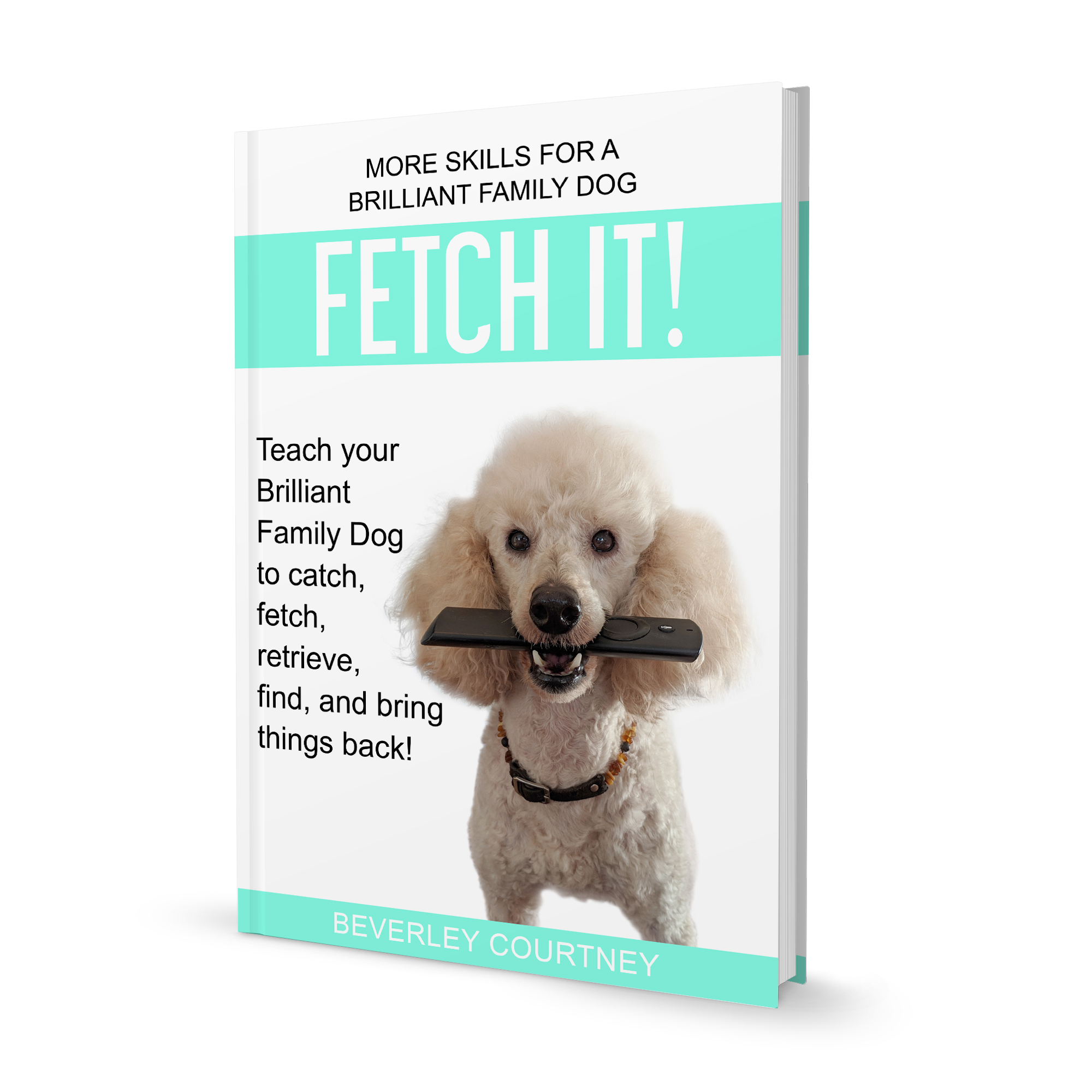Dog tricks! They’re such fun - for you and your dog.
And one of the main components of many things you’d like your dog to do is to pick things up.
So Pick up, Hold, Bring it to me, are so important - along with Catch, Fetch, and a formal retrieve.
You may have some learning to undo
If your dog has always been admonished for picking things up around the house and garden and on walks, you’re going to have to start from scratch teaching her that now you want her to pick them up!
Give her time to understand that the rules have changed.
You’ll need to teach your dog to hold with a soft mouth. So begin with things she can’t damage before graduating to your tv remote - which definitely would not appreciate being crunched enthusiastically or slobbered on!
Some dogs will squash soft and squishy things. So to encourage them to H-O-L-D gently, with a still mouth, you may find a firm, uncrunchable, tube good to start with. The sort of thing you come to in the centre of a roll of bags.
It needs to have some grip - so not shiny smooth plastic - and not mind getting wet.
As you can see from this picture, EVEN a sighthound can perform a cracking retrieve! (Can’t tell you how many times I was told that as Cricket is a Whippet she’d never be able to fetch. What’s a rabbit, if not a retrieve object?!)
Here’s how to get started!
Here’s an excerpt from Fetch It! Teach your Brilliant Family Dog to catch, fetch, retrieve, find, and bring things back! to get you going, and discovering that it really isn’t that difficult to turn your bored dog into an eager retriever!
Ready, get set, play!
The essence of this method is that it’s fun! It’s a game! So get your dog playing with you first. If she’ll tug, do that. If she’ll run after toys, do that - whether she brings them back or not. And if toys are not de rigueur yet, just run about and play chase and dodge with her. You want to get her heart rate up a bit so she doesn’t fall asleep when you want to work with her.
Where you start this is important. Skip the busy kitchen or distracting garden. The best place to start is the study, spare bedroom, or bathroom or any other small room which is free of distraction.
Kneel on the floor if you are able. This stops you looming over your dog, which many find very intimidating. Or you can sit so the dog is just in front of you.
Animate your chosen toy - at ground level. You want to simulate a rat or rabbit moving fast, then stopping to twitch its whiskers, then darting forward again. A kind of figure of eight movement on the floor around you will work. Watch your dog - he’ll suddenly plug into this movement as his instincts wake up. Then he’ll start to chase it.
He may start by pouncing on it, and using his feet to stop it. Keep it moving, jerking it away as he gets close, until he realises he can use his mouth for this. Let him catch it! And mark with a YES.
And immediately reward him with a treat to his nostrils, removing the toy as he releases it (you were still holding on to it!)
Repeat, repeat, repeat, till you are actually both holding the article for a moment before you ask for a release. This is your first session and will probably take you about three minutes. STOP! Don’t be tempted to carry on till your dog gets bored and loses interest! Remember we’re teaching, not testing. Put the toy away and have another go later.
What happens next? Ooh, you’ll have to nip over to Amazon and get the book! It goes into huge detail on catching, fetching, retrieving, tugging, how to start your assistance dog work, and even how to teach scentwork searches!
With plenty of reviews, it’s proving popular with people who want to have more fun with their dog. And it’s the basis of so many tricks, both fun and very useful.
Now, who’s going to fetch the car keys, pick up the post, and unload the washing machine for you?
Do you like to learn via video lessons? Check out the Brilliant Family Dog Academy where we get you going with some great tricks!
























